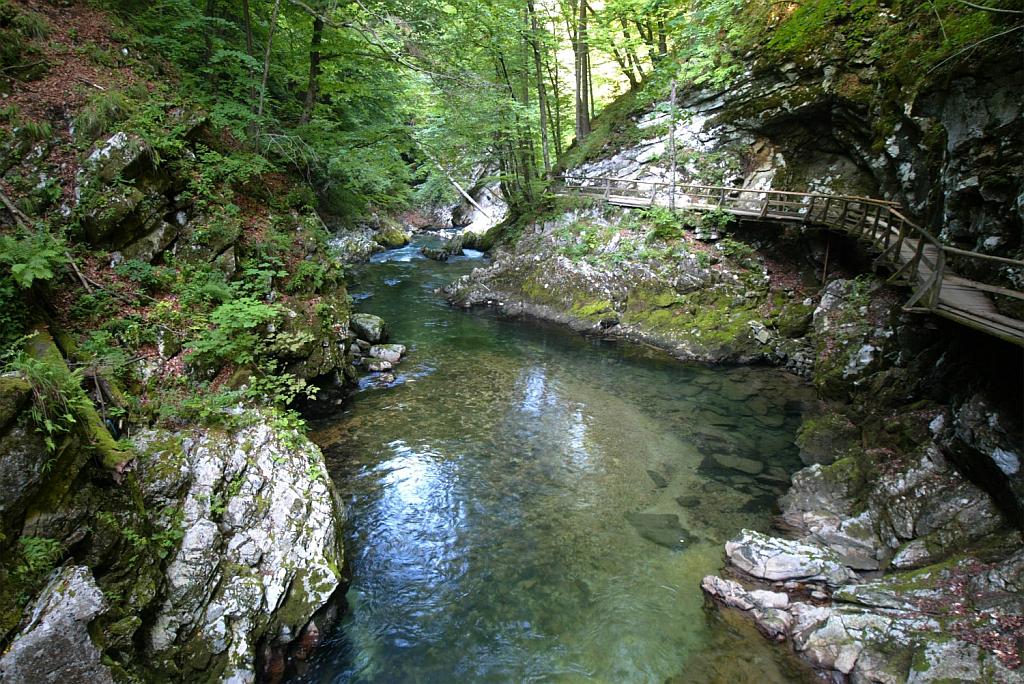

Despite the size of the gorge – it measures a kilometer and a half – it was only discovered in 1891, when the mayor of a nearby town and a cartographer stumbled upon the gorge and discovered the precipitous walls carved out by the Radovna River. They were lucky: The water levels were unusually low at the time, allowing the explorers to pass through the gorge. The canyon was created during the last Ice Age, when a glacier changed the direction of the stream. Now, several millennia later, water roars through the narrows, creating rapids, waterfalls, and turquoise pools. The end of the gorge is marked with a 16-meter waterfall.
Originally, the gorge was almost inaccessible, but local residents soon built a road leading towards the newly discovered attraction and installed a network of suspended footbridges over the stream. Almost immediately, it began to draw visitors from the nearby resort town of Bled. It also attracted the attention of botanists. Because of the canyon’s unique topography, its shade, and the humidity that prevails there year-round, the area acts as a unique habitat for flora.
The canyon became known as the Vintgar Gorge. The etymology of the name is still unclear, but in may derive from the German word Weingarten, a reference to the vineyards that once existed in the area. In any case, the name became well-established and it was soon applied to other gorges around Slovenia, such as the Ig Vintgar (Iški vintgar) south of Ljubljana.
In the years following the discovery, the modern world intruded into this previously untouched corner of Slovenia: a railroad bridge was built above the gorge and a hydroelectric power plant was set up to aid the construction of the rail tunnel under the Karavanke Mountains. But for the most part, the Vintgar Gorge remained much as it had been before its discovery.
The wild nature of the canyon has made it such a popular tourist destination that overcrowding is becoming a concern in the summer months. During much of the rest of the year, however, visitors can still walk the length of the Vintgar Gorge in solitude – and admire the brute force of nature that has shaped the spectacular canyon over the millennia.

































































